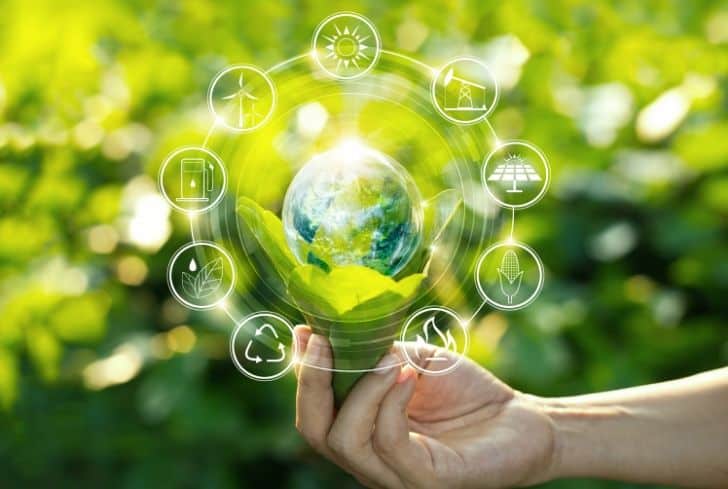In order to work out just what exactly carbon credits are, where they come from and how they work, we could use the analogy of our own credit cards which most of us still take for granted. Now, ask anyone who has fallen prey to not managing their finances properly about the consequences of this.
Essentially, credit, when used responsibly, can achieve a great number of positive things in our lives, such as financing and paying off our dream hybrid of college tuition fees. But the danger is always there that this form of credit can be abused and when it is, the consequences can be quite dire, reversing the quality of life immeasurably. There’s another old saying which says; give credit where it is due. In the context of global warming and climate change, this philosophy has become ironic.
It is ironic because giving (carbon) credit is largely overdue and time is rapidly running out in order to address the long-overdue balance. It needs to be paid back as soon as possible. There is no longer an available period of grace. Forget about the main purposes for now, and let’s look at a brief summary of what carbon credits are.
- Permission – Permission is granted to a country, company, or organization to produce a certain number of emissions that can be traded in, if not used.
- License to trade – Another explanation says that a certificate is issued giving the prospective emitter the right to produce up to one ton of CO2 or its equivalent.
- Another common term – Another widely used term refers to carbon offset as a financial tool to reduce (not increase) carbon emissions by storing carbons for future or later use.
So, in a nutshell, carbon credit (often called carbon offset) is a credit for greenhouse emissions reduced or removed from the atmosphere from an emission reduction project, which can be used, by governments, industry or private individuals to compensate for the emissions they are generating.
According to Wikipedia,
A carbon credit is a generic term for any tradable certificate or permit representing the right to emit one tonne of carbon dioxide or the equivalent amount of a different greenhouse gas. Carbon credits and carbon markets are a component of national and international attempts to mitigate the growth in concentrations of greenhouse gases (GHGs).
Various Features of Carbon Credits
When this ingenious concept was first discussed and the phrase coined, stakeholders saw mainly inherent benefits in, on the one hand, sustaining life as we know it today, and on the other, rescuing the environment and cutting down on carbon emissions.
But like the practice of using the dreaded credit card, the plan hasn’t worked up to now. In the meantime, this list highlights some of the main features of carbon credits, if correctly put into practice.
- Individual benefits – Domestic users can also gain by trading in carbon credits while helping them adopt a more concerted and disciplined approach to reducing their carbon footprints.
- Buying greenhouse gasses – According to most sources, the purchase of carbon credits remains a lucrative enterprise. Each carbon credit that is purchased is channeled to a company that is specifically tasked to bring down emissions or provide more sustainable and environmentally-friendly alternatives to these emitters.
- Business and job opportunities – Trading in carbon credits using the capitalist principle, if applied fairly, allows private investors to generate profits from their purchases and diversify them towards the creation of environmentally-sustainable businesses that either emit very low or no carbons. And as new businesses are started up, more employment opportunities arise.
Things you need to know about the Kyoto Protocol
Essentially, this is where it all began. The very idea of trading in carbon credits was signed and sealed at this gathering of nations some years ago. That nations have reneged on the agreements they signed is not a moot point and is a matter of public record. Here we highlight some of the characteristics of the Kyoto Protocol.
- UNFCCC – The Kyoto Protocol saw the formation of the United Nations Framework Convention on Climate Change.
- Cap-and-trade – At this gathering, a system was devised to impose national caps on greenhouses of developed nations that ratified the Kyoto Protocol. They were aligned as Annex B countries.
- AAU’s – Each of these countries was given an allotment and a corresponding number of emissions allowances known as Assigned Amount Units.
- Trading targets – Participating countries were required to reduce their emissions to well below nineteen-ninety levels and below five percent. They could also reduce their emissions by trading in emissions allowances with countries that already had surplus allowances. They could meet their targets by buying carbon credits.
- Two flexible mechanisms – Overall costs of reducing emissions were kept minimal. Increasing cost-effectiveness, the Kyoto Protocol also founded two ‘flexible mechanisms’ known as the Clean Development Mechanism and the Joint Implementation.
How Does Carbon Credits Work?
Carbon credits are typically measured in tonnes of CO2-equivalents (or CO2e) and are bought and sold through a number of international brokers, online retailers, and trading platforms.
Businesses that find it hard to comply with the carbon emissions, purchase carbon credits to offset their emissions by making finance readily available to renewable energy projects, forest protection, and reforestation projects around the world.
These renewable energy and energy efficiency projects replace fossil fuel and industrial processes. This all helps businesses in mitigating their emissions and comply with global standards.
Offsetting one tonne of carbon means there will be one less tonne of carbon dioxide in the atmosphere than there would otherwise have been. For e.g.: when solar energy companies sell carbon offsets, this helps them as these projects become more viable. The buyers of the offsets benefit as they can use these offsets to mitigate their greenhouse gas emissions.
Many types of activities can generate carbon offsets. Projects which sell carbon credits include wind, solar, geothermal, biomass projects which replace fossil fuel-powered plants, low-cost household device projects that can eliminate the need for extra energy, methane capture from landfill gas and agriculture, different afforestation projects, forest protection from illegal logging, destruction of heat-trapping greenhouse gases from the atmosphere and many more.
The mitigating mechanisms
We have already pointed out the credit conundrum and professed that carbon credit agreements have not worked to plan. This section deals with another term; carbon offsets. It is similar to the principle of applying for carbon credits but is primarily designed to help reverse the damage already done. Here we highlight some of the features and functions of using carbon offsets.
- Investments – Those who can, invest in projects which are specifically designed to reduce or prevent the carbon dioxide or greenhouse gasses.
- Damage control – One description given to carbon offsets was that it is a form of damage control in which guilty parties can make reparations for previously excessive emissions and basically through the purchase of carbon offsets, turn a blind eye while harmful gasses are controlled or reduced elsewhere.
- The vintage year – This peculiar analogy synonymous with the harvesting of grapes basically highlights the year in which the reduction of carbon emissions actually occurs.
- The source project – It remains a precarious form of technology because there is always the chance that it may fail. What happens is this; the technologies that are devised to offset carbons use biomass and methane. But industrial energy efficiencies are encouraged during this ‘source’ process and renewable energy is used.
- Certification – Checks and balances are put into place via certifications to ensure that carbon offsetting procedures and methodologies are properly authenticated and registered.
Which Carbon Credit Method Works Best – Mandatory or Voluntary?
Finally, while protocols and regulations are in place, voluntary alternatives towards making concerted efforts to reduce carbon emissions are also available. A question worth asking at this point is; which method works better and if so, are their results to substantiate this?
We end this article on carbon credits by listing key historical features and assigned mandates. We begin with mandatory carbon credits. You can go through these brief lists and begin to draw your own conclusions.
Mandatory Carbon Credits
The Kyoto Protocol was the precursor to mandatory carbon credits. Here we highlight some of the main outcomes from that historic conference and those that followed it.
- Cap-and-trade systems – Under a cap-and-trade program, a limit (or “cap”) on certain types of emissions or pollution is set, and companies are permitted to sell (or “trade”) the unused portion of their limits to other companies that are struggling to comply.
- CDM – The Clean Development Mechanism only enforces countries to partially meet Kyoto targets through the financing of carbon reduction vehicles in mainly developing countries.
- JI – Tradable units from Joint Implementation initiatives are known as Emissions Reductions Units. This system has a long-term target in mind.
- EU-ETS – The European Union Emissions Trading Scheme is a body of countries that have all been given an overall cap to work from as a single body. The original EU member states of this body were nick-named the ‘bubble’.
Voluntary Carbon Credits
Finally, let us briefly feature the voluntary alternative. Best known by its acronym, VERS, Voluntary Emission Reductions, reminiscent of bartering, is a carbon offset traded voluntarily for carbon credits. Reductions, when they take place, are monitored, in turn, by a voluntary certification process.
Voluntary carbon credit enables companies and businesses to purchase carbon credits on a voluntary basis to satisfy Corporate Social Responsibility objectives
This overview has explained what carbon credits are, how it works, and how it mitigates carbon emissions. It linked this explanation to its origins, also suggesting that the process of trading in carbon credits is subject to neglect and/or abuse and the agreements in place could be broken.
References:







